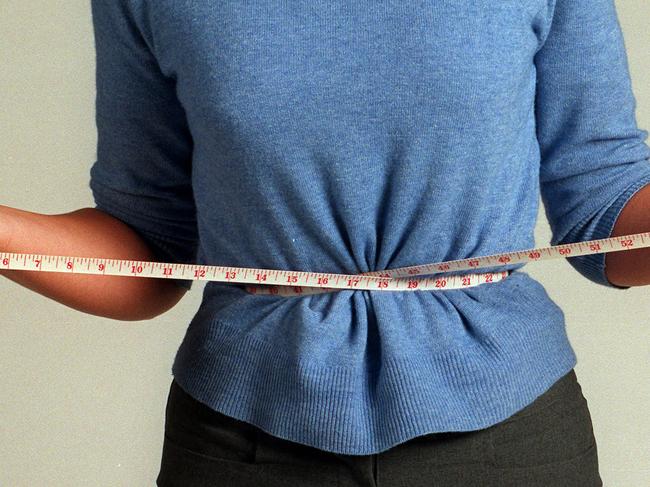Excess weight around waist should be used to diagnose obesity, not just BMI, Lancet finds
Top experts say we need to stop using the BMI to diagnose obesity. Instead it’s where you carry the fat that can matter more. While you don’t need to worry so much in some areas, you do if you hold a lot of weight here.
Weight Loss
Don't miss out on the headlines from Weight Loss. Followed categories will be added to My News.
Health experts have recommended major changes to how obesity is diagnosed globally, warning current approaches are ineffective and inconsistent.
The release of The Lancet Diabetes & Endocrinology: Global Commission report has also put the spotlight on the body mass index (BMI) to diagnose the disease that affects around one in three Australians.
“BMI is helpful, but not the whole answer,” says Chair of the Monash University Department of Surgery and School of Translational Medicine at Alfred Health, Professor Wendy Brown.
She said the thinking also needs to focus more on where fat is stored and the impact on a person’s lifestyle.
Professor Brown was part of the team of 56 leading global health experts who developed the new definitions for the Commission.

“With the new criteria proposed … we finally have a medically meaningful way of diagnosing obesity, meaning we can tailor treatment plans according to the patient’s needs,” she said.
“We needed to try to bring some commonality to the way that we look at things because if you’re not speaking the same language from the point of view even of definitions, then you’ve got no chance of formulating effective treatments or even preventive strategies.”
Professor Brown said obesity was a nuanced disease which was why BMI, your weight in kilograms over your height in metres squared, was not the answer.
“For example you could be a very fit athlete carrying a whole heap of muscle and you could weigh 100 kilos pushing your BMI up to 30,” she said.
“Someone who’s fit enough to be carrying that much muscle is quite different to someone who is 100 kilograms and has a BMI of 30 but the majority of the weight they’re carrying is fat.”
Professor Brown said key was where the fat was carried.
“If you carry it around your waist it is closer to your heart and it’s around all your vital organs and likely to do more damage than carrying it on your hips and thigh.”
She said the definition of obesity was becoming more important with over-nutrition now more of a problem globally than under-nutrition.
The changes also focus on how doctors measure weight, and the conversations they have with patients about it.

“What we are hoping is that we will start to see clinicians not measuring just your height and weight, but also thinking about other ways of measuring adiposity, the term for carrying excess fat,” Professor Brown said.
“The ways we can do that as clinicians is we can measure your waist and then we compare that to how that compares to your hips and also to your height.
“Considering where you carry your fat might be even more important than having a high BMI.”
Professor Brown said some people who live with obesity can be healthy and active, but in others the excess fat contributes to diseases such as diabetes, heart disease, liver disease and cancer.

“So the Commission is recommending that clinicians take time to understand their patients and how any excess fat may be affecting that person’s quality of life and health and if it is an issue, discussing ways that they can work with them to help them loose weight,” she said.
“Hopefully these recommendations will push us all to consider how we can assist people who are living with obesity, who want to lose weight, to find some better treatment options.
“We have to do it sensitively and carefully. People living with obesity are the last group that many people still judge and even shame about their size.”
Professor Brown said there was still a lot of weight bias and stigma about obesity.
She hopes the new recommendations will help clinicians have conversation about weight management with their patients.
Originally published as Excess weight around waist should be used to diagnose obesity, not just BMI, Lancet finds



